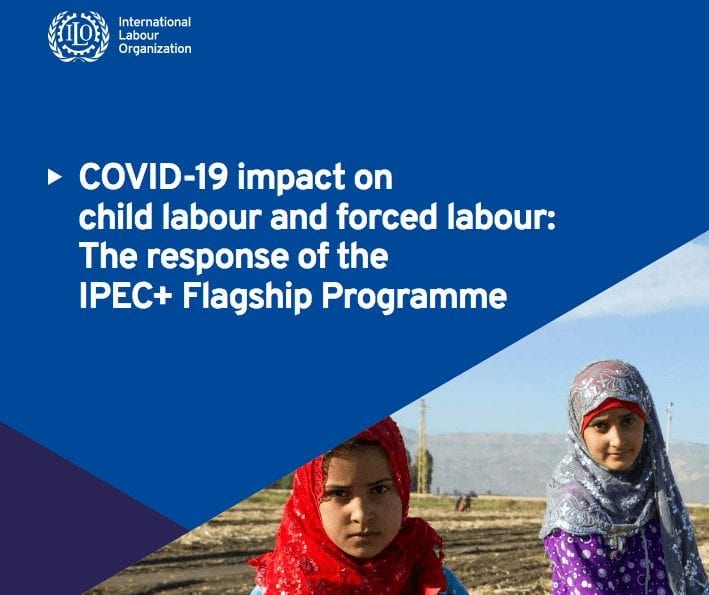
COVID-19 Impact on Child Labor and Forced Labor
COVID-19 has plunged the world into a crisis of unprecedented scope and scale.
Undoubtedly, restoring global health remains the first priority, but the strict measures required are resulting in massive economic and social shocks. As lockdown, quarantine, physical distancing and other isolation measures to suppress transmission continue, the global economy has plunged into a recession.
The harmful effects of this pandemic will not be distributed equally. They are expected to be most damaging in the poorest countries and in the poorest neighborhoods, and for those in already disadvantaged or vulnerable situations, such as children in child labor and victims of forced labor and human trafficking, particularly women and girls. These vulnerable groups are more affected by income shocks due to the lack of access to social protection, including health insurance and unemployment benefits.
The ILO’s Flagship International Program on the Elimination of Child Labor and Forced Labor (IPEC+) has ongoing operations in 62 countries, all of which are affected by the COVID-19 pandemic. The program has developed business continuity plans to mitigate the risks and to re-purpose its strategy and is seeking to allocate additional funding to support efforts to monitor the impact of COVID-19 on child labor, forced labor and human trafficking, particularly in relation to school closures, business shut downs, unemployment, the loss of livelihoods in affected communities and a lack of social protection systems
Read the full report here.
